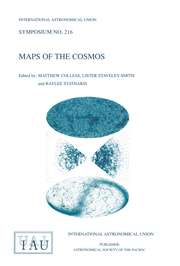Article contents
Vertical refraction angle derived from the variance of the angle-of-arrival fluctuations
Published online by Cambridge University Press: 14 August 2015
Abstract
A theory is developed for evaluating the vertical refraction angle from the variance of the angle-of-arrival fluctuations, assuming a horizontally homogeneous turbulent atmospheric surface layer. The vertical refraction angle is mainly a function of the vertical temperature gradient, and the variance of the angle-of-arrival is related to the temperature structure parameter CT 2. However, surface layer similarity theory states that both the mean vertical temperature gradient and CT 2 are functions of the same scaling temperature T* and a thermal stability parameter. This therefore provides an indirect method of determining the vertical refraction angle from a measurement of the variance of the angle-of-arrival and an estimate of the thermal stability parameter. Advantages of this method over other techniques of evaluating vertical refraction are discussed.
Information
- Type
- Research Article
- Information
- Symposium - International Astronomical Union , Volume 89: Refractional Influences in Astrometry Andgeodesy , 1979 , pp. 227 - 238
- Copyright
- Copyright © Reidel 1979
References
- 3
- Cited by

